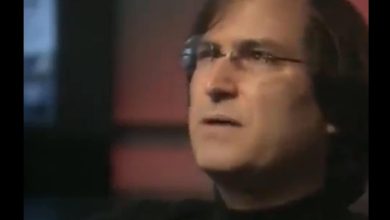Not just the ‘king of romance’, Yash Chopra was the founder of Bollywood’s ‘lost and found’ formula with Waqt

If you have seen enough Hindi films, you will know the trope where brothers get separated as kids and meet as adults. The moment where they realise that they have found their long lost family was treated with such elan in movies, it felt like the perfect start to the rest of their lives. But do you know how the trope of ‘lost and found’ got introduced to Hindi cinema? Like the flowing chiffon sarees, and the romantic Swiss Alps in Hindi movies, the credit for the original lost and found formula also goes to filmmaker Yash Chopra. Creating a world with complex characters, and filling it up with superstars of the time, Yash Chopra made the 1965 classic Waqt and gave Hindi cinema a device that would then be reused for decades. Not just that, with Waqt, he also introduced the concept of an ensemble cast in Hindi films.
For the unversed, Waqt is the story of a family that gets separated after an earthquake hits their town. The three brothers, played Raaj Kumar, Sunil Dutt and Shashi Kapoor, grow up separately until their paths collide as adults. We see those moments where they could have found out about each other, but Yash Chopra knows better than to blow the cover at the wrong moment. We are teased relentlessly, until the moment finally arrives and it feels like they have earned it fairly.
The ensemble cast of Yash Chopra’s Waqt.
Waqt was a turning point in Yash Chopra’s career and it was certainly a big turning point for Hindi cinema as well. In a chat with Shah Rukh Khan in 2012, the Deewar director had shared that at the time, he was still making movies under the BR Films banner, which belonged to his older brother BR Chopra. Yash had made two films then – Dhool Ka Phool and Dharmputra, but now he wanted to push the envelope and take on a film that could be made on an epic scale. When he initially pitched the film, he thought of casting Raj Kapoor, Shammi Kapoor and Shashi Kapoor but he was discouraged director Bimal Roy as the three of them looked so alike. Chopra recalled that with their resemblance, it would be hard to pull off a lost and found story so he accepted the feedback and landed on his final cast. He also cast Balraj Sahni, Achala Sachdev, Sadhana, Sharmila Tagore in significant parts.
Waqt was made as an ensemble cast piece, where every character had their own story arc that eventually flowed into the larger story of the film. Unlike the trends, there was no hero-heroine track, it was a web of interconnected characters who all influenced each other. There was a classic love triangle, a bad guy with a heart of gold, a murder mystery, a love story with class divide, a he, and even the stigma of adoption was addressed – anything under the sun that could raise the stakes, it was all compressed into its 3-hour run. Chopra’s first two films had the theme of Indo-Pak Partition woven into the story, and with Waqt, he took the theme of Partition and presented it as separation of a family, which was one of the effects of the division.
The reveal of the sibling relationship untangles a lot of webs in the story.
Rewatching films from the 1960s is sometimes an exercise in examining how far we have come in Indian cinema. While rewatching Waqt, one could wonder why the film spends a whole lot of screen time showing two cars racing each other and that would be a valid question for any viewer of 2022. But what we don’t realise is that this was a unique feature for a motion picture back in the day. The Rohit Shettys of today have raised the bar of car stunts in Hindi films, but in 1965, watching two imported cars race each other on hilly terrain, across traffic, and almost colliding with each other was a thrilling concept that had the audience watching the screen with their mouth agape.
Waqt’s storytelling gave Hindi cinema various tropes, but the film’s visual aesthetic left an imprint so sharp that it affected generations of filmmakers. The representation of the wealthy on screen, the palatial homes, the carpeted floors and the expensive-looking chandeliers were so aesthetically shown in Waqt that for years, this film became the benchmark for the lifestyle of the wealthy in movies. While Yash Chopra introduced us to those chiffon sarees in the 1980s, his aesthetic for costumes was just as sharp even in the 1960s. The tight fitting kurti churidars, the jewellery that could leave you stunned were all introduced here with costume designer Bhanu Athaiya.
Yash Chopra’s visual aesthetic left an impression on generations of filmmakers.
And to top it all, Waqt had some great musical numbers Ravi and Sahir Ludhianvi that had the audience swooning over them.
Waqt was a gamechanger, not just for Yash Chopra’s cinematic journey, but for the journey that Hindi cinema took after this film. And while it might seem full of tropes today, this was a trendsetter.







